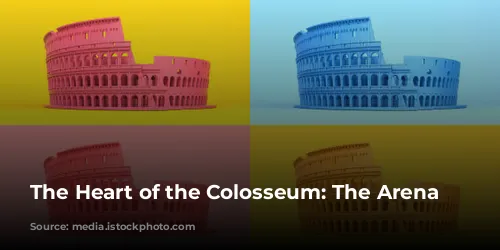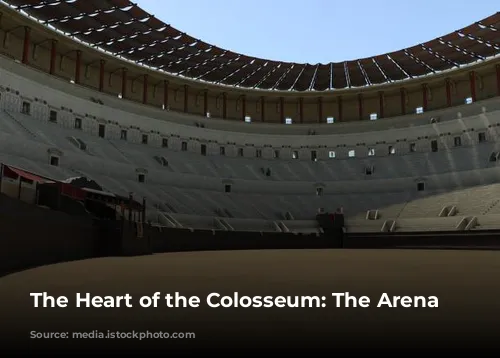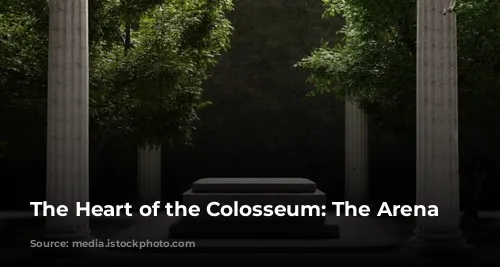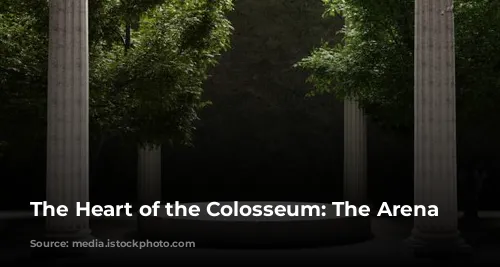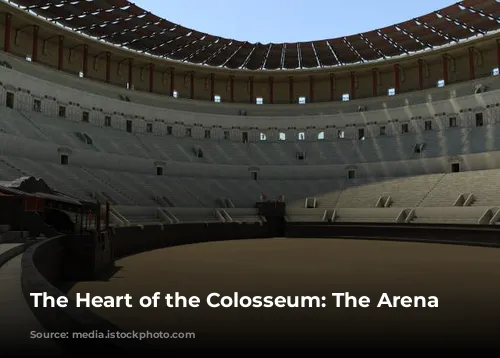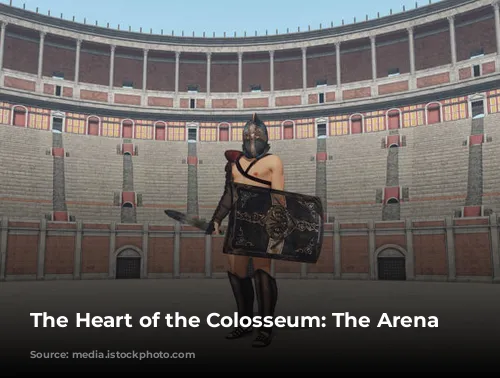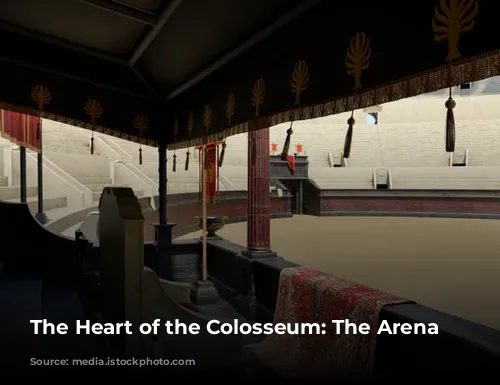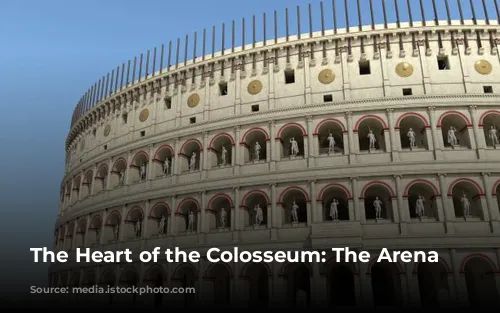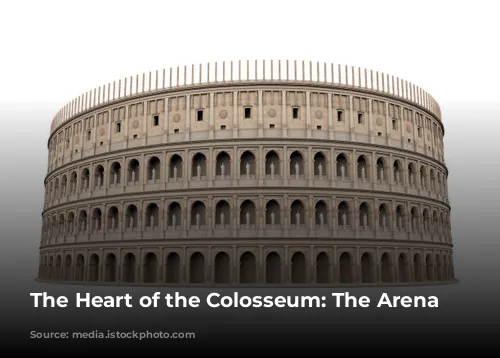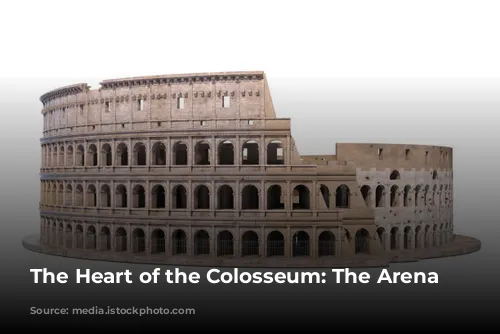The Colosseum’s arena was more than just a stage; it was the epicenter of gladiatorial combat and animal spectacles that captivated ancient Rome. Imagine a massive wooden platform spanning 83 meters long and 48 meters wide, an oval shape designed to keep the action flowing and offer every spectator an unobstructed view. This monumental stage has been partially reconstructed, allowing visitors to step onto the very ground where gladiators fought and animals roamed.
Stepping into the arena is like stepping back in time. You can trace the footsteps of gladiators, feel the immensity of the Colosseum, and see the two monumental archways: Porta Libertina, the gate of death for the wounded and fallen, and Porta Triumphalis, the gate of triumph for the victors. Beneath your feet lies the hypogeum, the underground labyrinth of ramps, cages, and mechanisms that brought the arena’s spectacular effects to life.
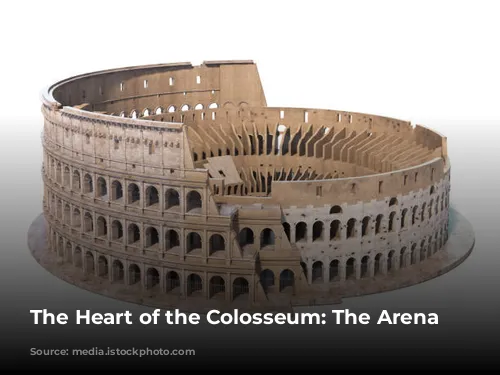
From Sand to Scenery: The Evolution of the Arena
When the Colosseum was first unveiled in 80 AD, the arena was a simple expanse of sand. The arena’s name itself, derived from the Latin word “harena,” literally means “sand.” This strategic use of sand served a practical purpose. It absorbed blood, urine, and vomit, provided traction for the fighters, and mitigated the stench under the Roman sun.
Over time, the arena evolved. Emperor Domitian, Titus’ brother, transformed the space by excavating a hypogeum beneath the surface. This underground chamber was a marvel of engineering, complete with ramps, pulleys, and animal cages, allowing for incredible special effects that dazzled the audience. Imagine animals appearing from trapdoors, gladiators rising from the depths, and scenes unfolding with breathtaking theatricality.
The arena was not just a bare stage, but a canvas for storytelling. Scenic elements were employed to set the mood for the various events. The venationes, or animal hunts, might feature mock jungles complete with trees, creating a sense of realism and spectacle. This scenery not only added to the visual impact but also cleverly concealed the trapdoors through which the animals emerged.
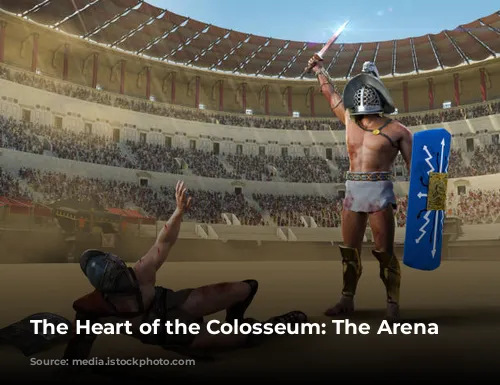
The Arena’s Legacy and Transformations
The Colosseum’s arena has witnessed a remarkable transformation over the centuries. In 1332, the arena was used for a bullfight, a testament to the enduring appeal of spectacle. During the 1600s, the arena became a place of Christian worship, with a massive wooden cross standing in the center and 15 tabernacles marking the stations of the cross.
While the original arena, made of wood, has long since vanished, the spirit of the games remains. The arena serves as a powerful reminder of the spectacle and violence that captivated the Roman Empire, a testament to the power of entertainment and the human desire for excitement. Today, we can walk in the footsteps of gladiators, envision the thrill of the games, and contemplate the legacy of this remarkable structure.
